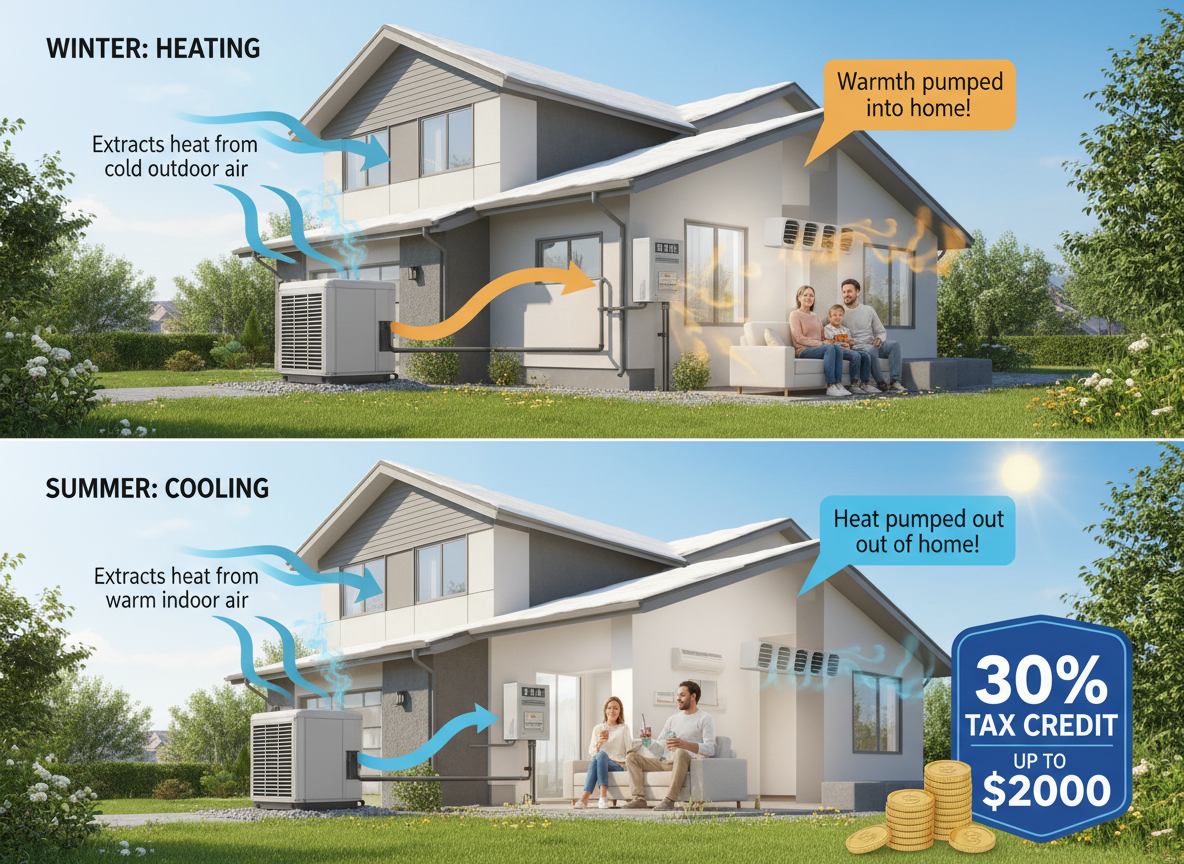
R6 vs. R8 Ductwork: The Ultimate Guide to HVAC Insulation & Efficiency
Your AC unit gets all the glory, but the ductwork is the unsung hero of your home’s comfort system. Think of ductwork as the "circulatory system" of your house; it delivers the air from your central air conditioning installation.
While basic ducting is made from sheet metal or flexible plastic, almost all residential applications in modern homes require insulation. This insulation is crucial for maintaining temperature and preventing energy loss as air travels through unconditioned spaces like hot attics or cold crawlspaces.
Insulation effectiveness is measured by R-value (thermal resistance). The rule is simple: the higher the R-value, the better the insulation capabilities.
In this guide, we will compare the two industry standards—R6 and R8 ducting—to help you decide which is right for your Los Angeles home.
What is R-Value and Why Does It Matter?
Before comparing R6 and R8, it is important to understand what the "R" stands for. R-value measures thermal resistance. It calculates how well a material resists the flow of heat.
- In the Summer: High R-value prevents the scorching heat of your attic (which can reach 140°F+) from warming up the cool air inside your ducts before it reaches your vents.
- In the Winter: It prevents the cold attic air from "stealing" the heat generated by your furnace or heater.
Deep Dive: Differences Between R6 and R8 Ducting
While both types of ducting serve the same fundamental purpose, the differences in their construction impact performance, cost, and how we handle the ductwork replacement.
Insulation Thickness & Construction
The most visible difference is physical bulk.
- R6 Ducting: typically features insulation that is approximately 1.5 inches thick. It is the standard baseline for many older homes and retrofit projects.
- R8 Ducting: features thicker insulation, typically ranging from 2 to 2.5 inches thick.
Think of the difference between wearing a light windbreaker (R6) versus a heavy puffer jacket (R8). The R8 ducting provides a thicker barrier between the air inside the duct and the hostile temperature outside of it.
Energy Efficiency & Performance
Does thicker insulation equal massive savings? Yes and no.
- The Efficiency Delta: R8 ducting generally reduces energy loss by approximately 2% to 3% more than R6 ducting.
- The Real-World Impact: While 3% sounds small, it accounts for the "thermal loss" that occurs when air travels long distances. If your ducts run through a particularly hot attic in the San Fernando Valley, R8 will deliver air that is cooler than R6, meaning your AC unit doesn't have to run quite as long to cool the room.
Cost Implications
The price difference involves two factors: materials and labor.
- Material Cost: R8 ducting has a wider diameter and uses more insulation material, typically costing 20-40% more than R6 stock.
- Labor & Installation: Because R8 is thicker, it is bulkier and harder to maneuver. In tight Los Angeles attics or crawlspaces, installing R8 takes more time and effort. Installers may charge 10-20% more for labor due to the increased difficulty of routing these larger ducts without crushing the insulation.
R6 Ducting: Pros and Cons
The Advantages:
- Cost-Effective: Lower upfront material costs make it a budget-friendly option.
- Flexibility: The smaller exterior diameter makes it easier to install in older homes with narrow wall cavities or tight attic clearances.
- Adequate Performance: It is significantly more efficient than older, uninsulated (R-2 or R-4) ducts.
The Disadvantages:
- Lower Efficiency: It allows for more heat transfer than R8, meaning your system works slightly harder.
- Code Limitations: In some climate zones or new construction projects, R6 may no longer meet the minimum energy code requirements.
R8 Ducting: Pros and Cons
The Advantages:
- Maximum Thermal Protection: The thicker insulation keeps air colder in summer and hotter in winter.
- Lower Utility Bills: Over the lifespan of the system (15-20 years), the 3% energy savings can accumulate.
- Noise Reduction: The thicker insulation can also act as a better sound damper, potentially quieting airflow noise.
The Disadvantages:
- Higher Upfront Cost: Both materials and installation labor will be higher.
- Space Constraints: It is difficult to retrofit R8 into tight spaces where R6 was previously installed. Compressing R8 to fit into a small hole actually ruins its R-value, rendering the upgrade useless.
Which Ducting is Best for Los Angeles Homes?
The choice often comes down to a balance between budget, building codes, and space.
In California, Title 24 Energy Codes have become stricter, often prescribing R8 ducting for new construction or substantial alterations in unconditioned spaces (like attics). However, for specific retrofits or tight-space replacements, R6 remains a viable and commonly used option.
Our Professional Recommendation:
Due to the rising costs of materials and labor, we frequently install R6 ducting for replacement projects in Los Angeles. It remains the most affordable option and, for many homeowners, the marginal difference in monthly energy savings (cents on the dollar) does not always justify the steep upfront cost increase of R8.
However, we aim to serve your specific needs. If you are unsure about the current state of your system, we recommend scheduling a routine maintenance check where we can inspect your current R-value levels.
- If you are planning a "forever home" renovation and want the absolute highest efficiency regardless of upfront cost, R8 is the superior technical choice.
- If you are looking for a code-compliant, budget-friendly installation that still offers excellent performance, R6 is the industry standard.
Ready to Upgrade Your Air Quality With LA Heating & Air
We install and replace units strictly adhering to Los Angeles code compliance and safety standards and every installation or replacement has permits included. Whether you choose R6 or R8, we ensure your system passes all inspections.
Have you done your research and decided on an R8 system? We are more than happy to provide a free consultation and quote to see if it fits your home's infrastructure.






















.png)














